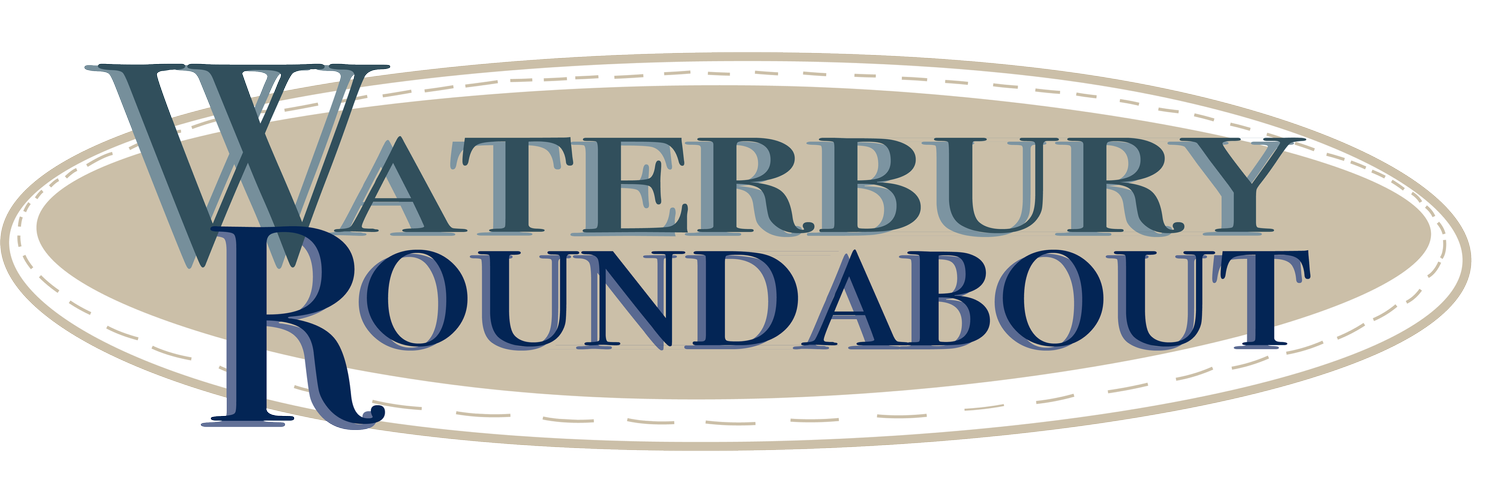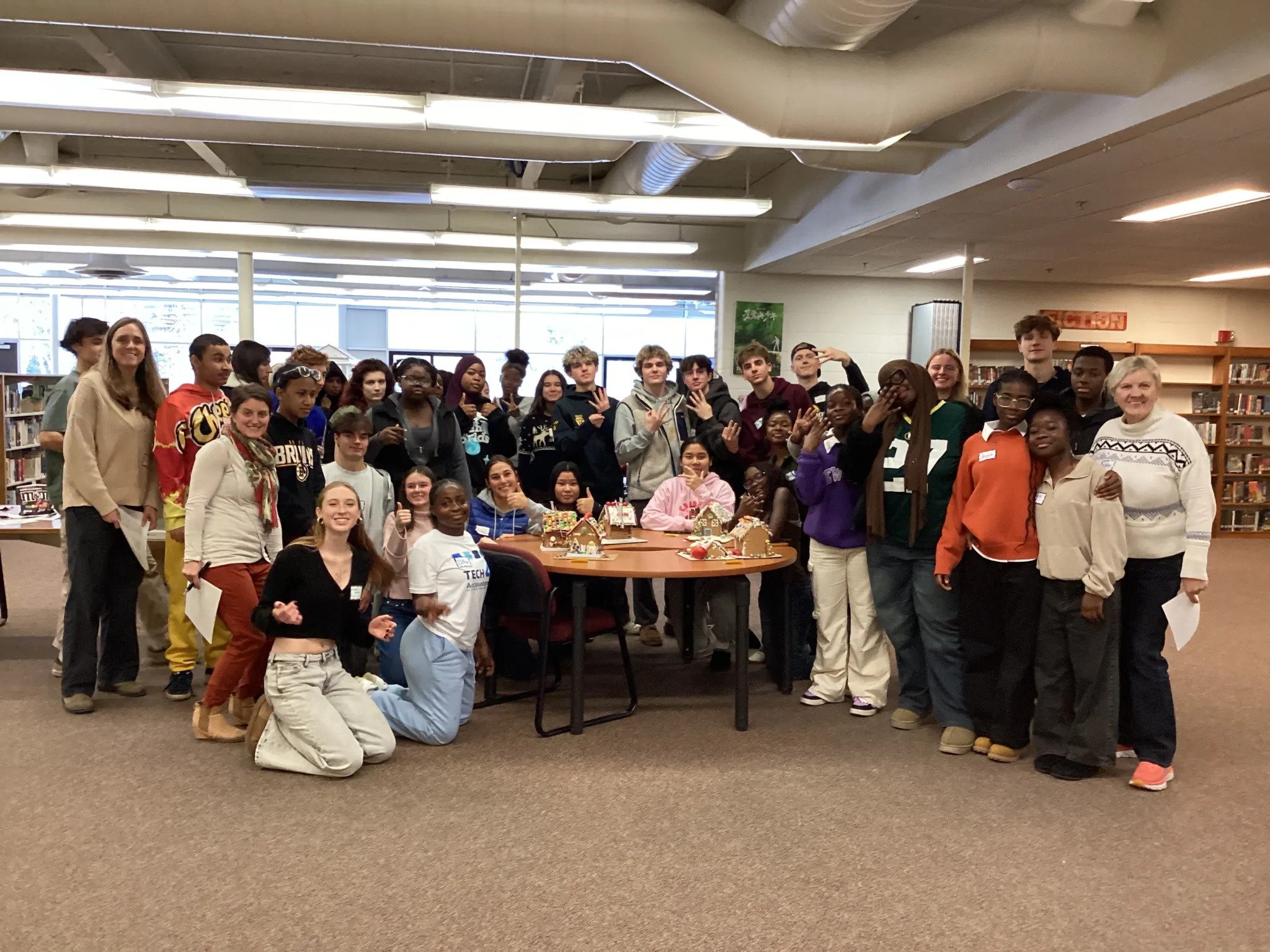Winooski-Harwood student exchange helps build bridges
February 14, 2025 | Harmony Belle Devoe | Community News ServiceWinooski and Harwood students gather in the Harwood Union High School library last December to discuss their communities. Photo by Genevieve Knight
MORETOWN — Winooski students were mingling with their counterparts at Harwood Union High School, having fun decorating gingerbread houses. But in addition to engaging in such festivities at their December gathering, they also ventured into the more serious fields of community building and social advocacy.
The event was funded by a U.S. Department of Education grant obtained through the office of Sen. Bernie Sanders, I-Vt. The grant was designed to support the Harwood travel study project.
First-generation Vermonter Jenny Paw, like many of the Winooski students, had never met with Harwood students before. Formerly from Texas, Paw is in eighth grade at Winooski Middle School.
The Winooski students’ visit with Harwood to talk about the efforts their clubs have made to benefit their communities was a part of a broader effort among Winooski students to combat racism.
These students find this work important partly because they have experienced hostility and racism from students in other districts, especially during sports competition.
The Winooski School District has a very racially diverse student body — with 60% of students being people of color — quite different from the makeup of schools they play against. As a result, some Winooski teams have experienced multiple racist incidents.
Winooski 11th grader Natalie Dzessou shared that this was a common experience for Winooski teams.
“One time another team called us monkeys,” Dzessou said.
About 31.5% of U.S students have experienced racism at school, according to the national Youth Risk Behavior Survey. However, only 20% of bullying incidents get reported.
Paw said that students from Winooski receive rude comments so often that they are no longer affected by them. Neuvaine Mampuya agreed there is a negative perception about Winooski residents.
“People make Winooski seem ghetto, but it’s not,” she said.
Dzessou believes that Vermont students need more exposure to identities that may be different from theirs.
“If people were exposed to more diversity, stories and backgrounds, it could help,” Dzessou said.
Winooski students have the opportunity to learn how to cope with and share their experiences by storytelling, through a program called Unheard Stories.
Olivia Byamungu explained that the students have conversations about their experiences in Vermont and put on a show where they present stories of incidents based on the students’ lived experiences. The students also receive a stipend.
“It’s really eye-opening, and it touches you,” she said. Dzessour and Mampuya are also members of Unheard Stories.
Paw, Mampuya and Dzessou are also members of the Winooski Antiracism Steering Committee. Paw described how Winooski students have developed a list of goals, actions and demands in an effort to overcome racism in Winooski.
One of their demands asks that a Racial Truth and Reconciliation Commission be formed in their district to organize hearing campaigns related to incidents of racial bias, prejudice and injustice.
Other demands include requiring their teachers to incorporate components of ethnic studies and anti-racism in their school’s curriculum.They have also called for the hiring of a professional authority on students’ civil rights to host biannual workshops to teach and support students’ families in advocating for their children’s educational rights.
Another student group in the Winooski School District is Peace Jam, an after-school program that organizes projects to benefit their community, such as winter clothing drives. The club is similar to Harwood’s Resettled Outreach Club.
Melissa Mason, a co-adviser of Peace Jam, has been a math teacher at Winooski for 13 years. Especially because of the unique student population, she says she wouldn’t want to work anywhere else.
Mason said many schools do not want to partner with their students, so she and the students at Winooski value meeting with Harwood students to share ideas and experiences.
“Some schools fear change, or difference; they don’t understand our population,” said Mason. “Our school has a lot of cultural diversity, based on where they’re from, both geographically and socioeconomically.”
Lindsey Boyden, a 12th grader at Harwood, compared her school experience at Harwood with that of the Winooski students.
“We hardly ever talk about these topics in some classes; it depends on the class and teacher,” Boyden said. “Some teachers talk about current events a lot, and some don’t at all.”
This contrasts with the Winooski curriculum, which has a new class called Challenging Systems of Oppression. Mason shared what she views as the effect of students not being educated on current events and social issues.
“Not having education like this creates a cultural divide, and fear,” Mason said. “The circle of racism and hate is because of a lack of understanding, and lack of education of cultural differences.”
Mason believes that achieving this level of education, and ending the cycle of close-mindedness, is a multigenerational responsibility.
“It has to start with youth voice, but as adults and educators in the community, we need to provide the opportunity for interchanges like this,” she said.

